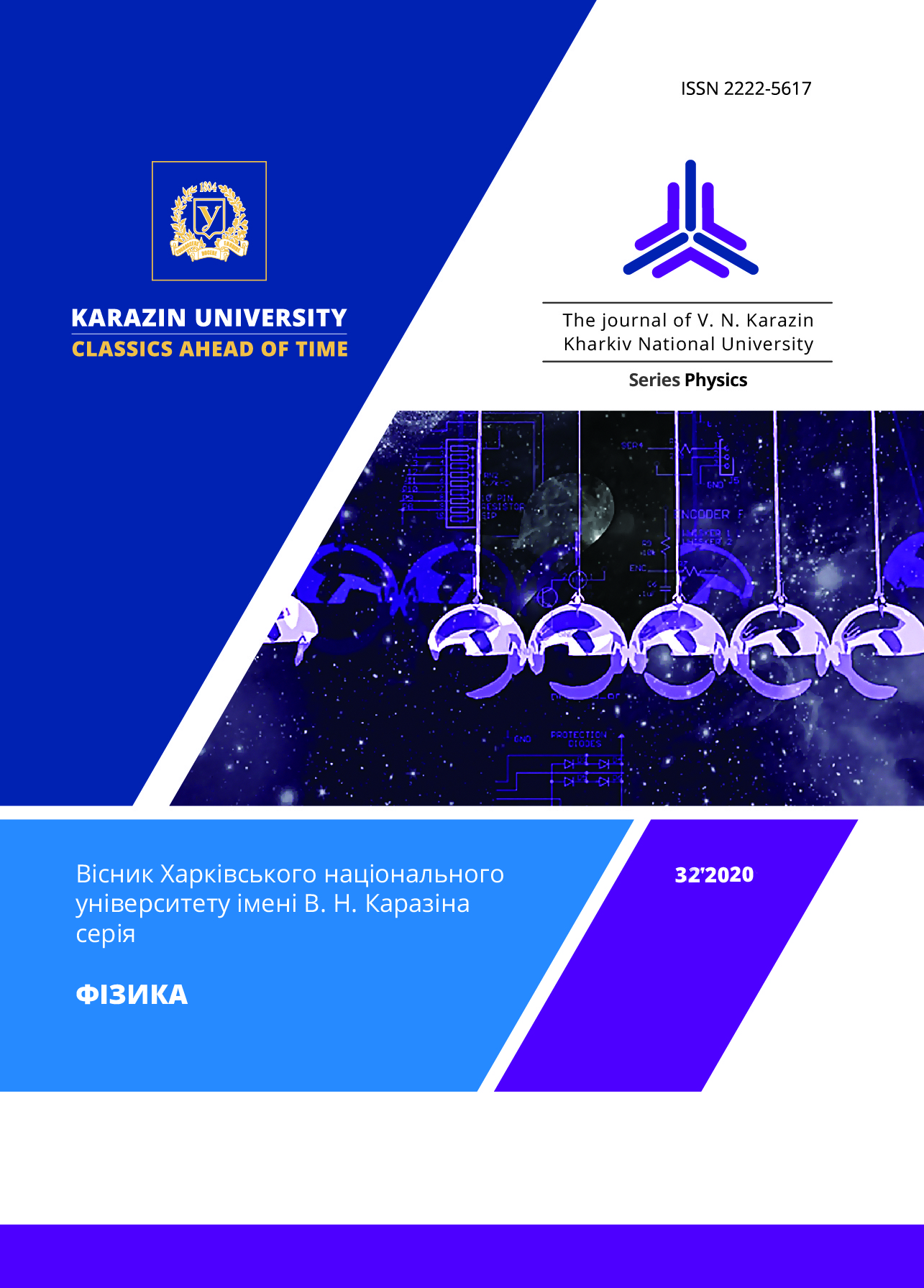Some problems of modeling laser-induced filaments
Abstract
Experimental data of formation laser-induced filaments in various media (potassium chloride, water, air and silicon carbide) are represented. These phenomena are analyzed as processes of Nonlinear and Relaxed Optics. Problems of modeling the creation the volume laser-induced filaments are investigated. Comparative analysis of plasma, nonlinear optical, diffractive and interference phenomena (including diffractive stratification), shocking processes (including Cherenkov radiation) and physical-chemical processes (including cascade model of excitation the proper chemical bonds in the regime of saturation the excitation), methods and models are represented and discussed. The optical breakdown for various matters has various natures: from shock ionization of gas to disruption of all chemical bonds for solid in the region of interaction light and matter or from nonequilibrium radiated processes in gas and liquid to irreversible phase transformations in solid. For diffraction stratification the modified models of Rayleygh rings was used. We show that this model allow to explain the experimental data for silicon carbide more effectively as Lugovoy-Prokhorov theory of moving foci. Modified Niels and Aage Bohrs models (microscopic) and Golub model (macroscopic) of Cherenkov radiation were used for the explanation of generation continuous radiation. Diffraction stratification shows the surface conic nature of Cherenkov radiation. It was show that physical-chemical method of estimations of corresponding processes is more general as electromagnetic (Kerr media) and one allow explain basic terms of resulting chain process with united point of view. Modified I. Frank model of interference the Cherenkov radiation was used for the explanation laser-induced optical breakdown in silicon carbide. Modified Rayleygh model and methods of continuum mechanics was created and used for the estimation sizes and form of observing nanovoids of silicon carbide. In whole the represented models allow to explain the corresponding chain more fuller and really as other models because one take into account of nonlinear optical transformation of primary laser radiation.
Downloads
References
Y.R. Shen. Principles of nonlinear optics. (Nauka, Moscow, 1989), 559 p. (И.Р. Шен. Принципы нелинейной оптики. (Наука, Москва)) [In Russian]
Eds. R.W. Boyd, S.G. Lukishova, Y.R. Shen. Self-Focusing: Past and Present. Springer Series: Topics in Applied Physics. Vol. 114. (Springer Verlag, New York, 2009), 605 p.
P.P. Trokhimchuck Relaxed Optics: Modeling and Discussions. (Lambert Academic Publishing, Saarbrukken, 2020), 249 p.
T. Okada, T. Tomita, S. Matsuo, S. Hashimoto, Y. Ishida, S. Kiyama, T. Takahashi. J. Appl. Phys., 106, 054307 (2009).
T. Okada, T. Tomita, S. Matsuo, S. Hashimoto, R. Kashino, T. Ito. Material Science Forum, 725, 19 (2012).
P.P. Trokhimchuck. Relaxed Optics: Realities and Perspectives. (Lambert Academic Publishing, Saarbrukken, 2016), 260 p.
V.P. Veyko, M.N. Libenson, G.G. Chervyakov, E.B. Yakovlev. Interaction laser irradiation and matter. Force optics. (Phyzmatlit, Moscow, 2008), 310p. (В.П. Вейко, М.Н. Либенсон, Г.Г. Червяков, Е.Б. Яковлев. Взаимодействие лазерного излучения и вещества. Силовая оптика. (Физматлит, Москва)) [In Russian]
V.S. Makin. Thesis. Saint-Petersburg (2013), 384 p. [In Russian]
E. Yablonovich Appl. Phys. Lett., 11, 495 (1971)
S. Minardi, A. Gopal, M. Tatarakis, A. Couairon, G. Tamosăuskas, R. Piskarskas, A. Dubietis, P. Di Trapani. Opt. Lett. 33, 1, 86 (2008).
L. Berge, S. Skupin, F. Lederer, G. Mejean, J. Yu, J. Kasparian, E. Salmon, J. P. Wolf, M. Rodrigues, L. Wӧste, R. Bourayou, R. Saurbrey. Phys. Rev. Lett. 92, 22, 225002 (2004).
V. K. Miloslavskiy. Nonlinear Optics. (Karazin University Press, Kharkov, 2008), 312 p. (В.К. Милославский. Нелинейная оптика. (Издательство Каразинского университета, Харьков)) [In Russian]
P. P. Trokhimchuck. IJARPS, 7, 5, 17 (2020).
I. Golub. Optics Letters, 15, 6, 305 (1990).
I.M. Frank. Cherenkov Radiation. Theoretical Aspects, (Nauka, Moscow, 1988), 286p. (И.М. Франк. Черенковское излучение. Теоретические аспекты, (Наука, Москва)) [In Russian]
N. Bohr. The passage of charged particles through matter, (IL, Moscow, 1950), 148 p. (Н. Бор. Прохождение заряженных частиц через вещество, (ИЛ, Москва)) [In Russian]
P. P. Trokhimchuck. IJARPS, 6. 7, 5 (2019).
P. P. Trokhimchuck. Proc. CAOL’2019. IEEE publisher, 437, (2020).








3.gif)
